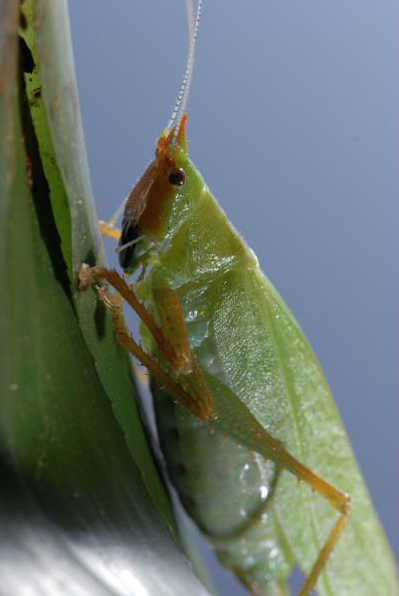Science News
Incredible Insects

Recent news stories examine entomological wonders— including a few insects that inspire human technology.
A leggy neighbor
The leggiest animal on the planet lives just south of San Francisco, according to a new report in ZooKeys. Illacme plenipes comes the closest to the description of a millipede than any of its relatives—females have as many as 750 legs!
Even millipede researcher Paul Marek thinks Illacme plenipes is special. Its plentiful legs have claws and National Geographic News lists more of its cool features:
…massive antennae (relative to the scale of its body), which the millipede uses to feel its way through the dark; a jagged and translucent exoskeleton; and body hairs that produce a sort of silk that may help Illacme plenipes adhere to the undersides of boulders. And unlike in other millipedes, the mouth of this species is specifically structured for piercing and sucking plant tissues.
Wanna get to know your neighbor? Movies and images are available for download here.
Insect hearing aids
A recent publication in Science explores how certain rainforest katydids are able to listen like mammals do, but much more efficiently. Katydids’ hearing organs are near the insects’ knees, and much like human ears, gather sounds from the air and transmit them to the brain in fluids.
For humans and other mammals, sounds are collected by the eardrums in vibrations, which are transferred by three ear bones to the cochlea. Fluid in the cochlea translates these sounds and sends them to the brain.
In katydids, the ear bones are missing, simplifying the process. (An excellent comparison illustration is available at Scientific American.) This simplification could lead to better hearing aids for humans, according to the lead author of the study, Fernando Montealegre-Z. “These findings change our views on insect hearing and open the way for designing ultrasensitive bio-inspired sensors.”
Insect-inspired water bottles
Finally, recent news reports describe a new company creating water-collecting bottles for “the most arid regions of the world.” Their inspiration? The Namib Desert beetle. Wired UK describes the insects’ process of water collection:
The beetle survives by collecting condensation from the ocean breeze on the hardened shell of its wings... The beetle extends and aims the wings at incoming sea breezes to catch humid air; tiny droplets 15 to 20 microns in diameter eventually accumulate on its back and run straight down towards its mouth.
Want more exciting entomology?
How about disease-fighting ladybirds? Learn more at ScienceShot. Insect movie stars? Watch their cameos at the New York Times.
Katydid image: Fernando Montealegre-Z and Daniel Robert